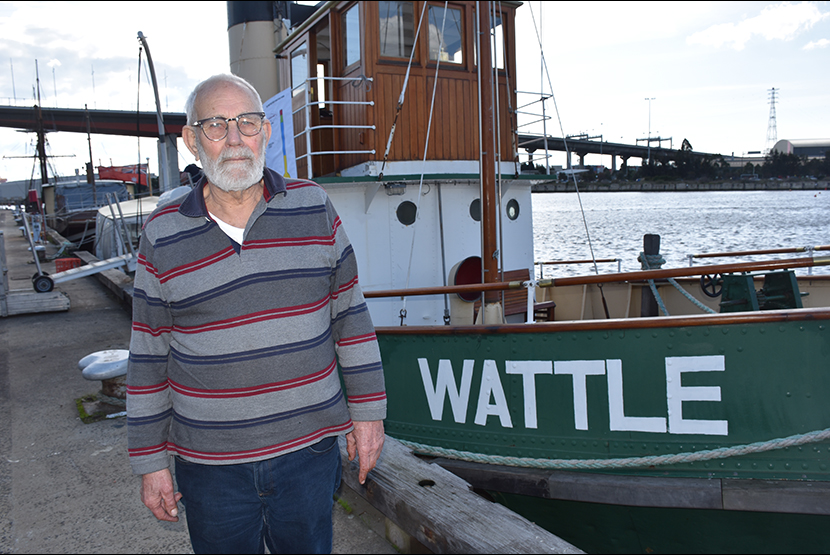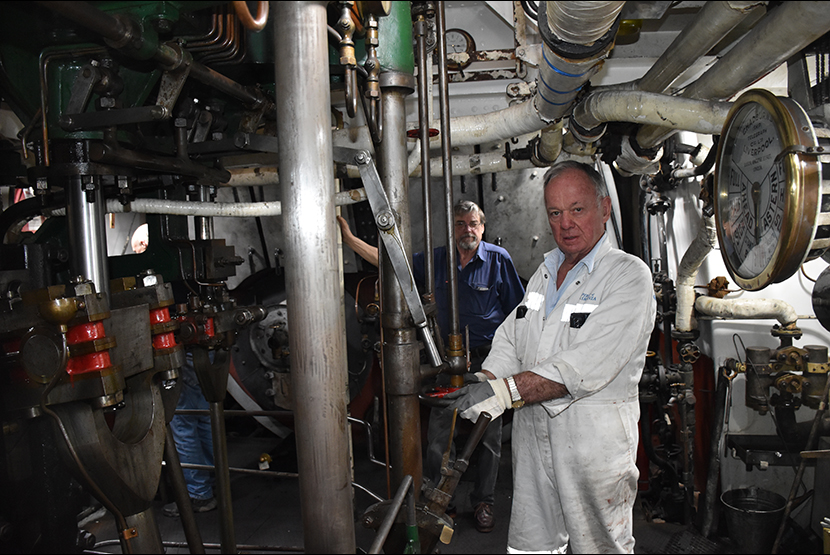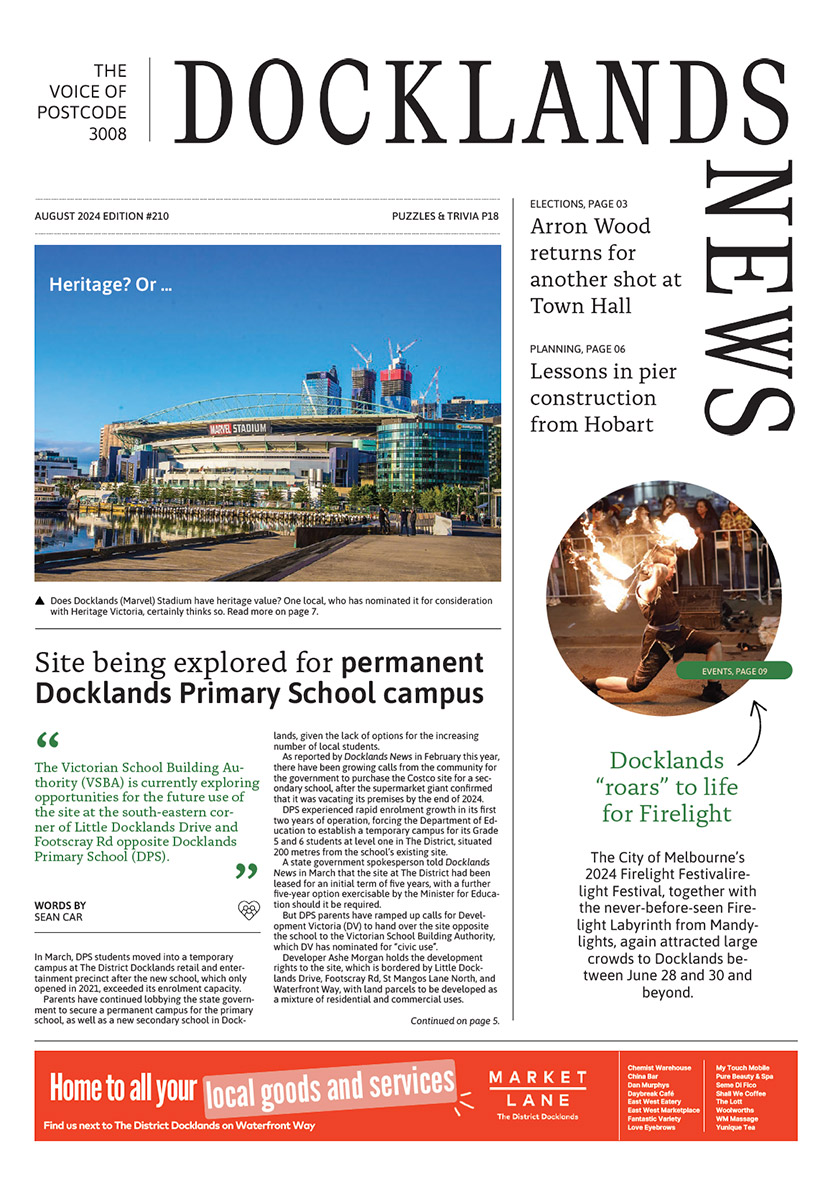Dead slow astern for the Wattle
The guys in the engine room were rolling up their sleeves as they got the Wattle ready for a trial run in October.
They’d fired up the boiler and checked they were reading commands from Captain Dick Francis.
All the cute little tug needs now is a “haircut and shave” to remove the barnacles.
All of the hard restoration work has been done after the tug’s safety certificate was withdrawn 14 years ago.
Patrons came down to North Wharf on Sunday, August 28 for a free sausage and a demonstration of her fitness.
So far donations have amounted to $1.75 million and 104 volunteers have put in 40,000 hours of work to get her to this stage.
The tug belongs to Bay Steamers Maritime Museum, and she will be available for charter but it’s her history that gets the guys fired up.
Captain Dick Francis was waxing lyrical about the Wattle’s past at the event.
“She’s older than I am,” he said. “She’s 86 and I’m 83. She was born in the State Dockyard in Sydney in 1936 and I was born in Portsmouth, England.”
Even though the early ships he captained were steam-powered, when he took out the Wattle in 2005, “it was a steep learning curve”.
“It was quite hard to get her out,” he said. “We took it down the river and back again.”
The steering on the old steam tugs is not direct and to get the engine up to speed the captain has to send a command down via the ship’s telegraph.
A bell rings below and the guys in the engine room read the command and use a throttle to select between full, half or slow.
They can signal they’ve understood by moving a lever on the circumference of the telegraph.
The romance of the old days is still living on in the portholes, galley, steam room and telegraph of a tough little vessel that requires 13 tonnes of water in the steamer to get it moving.
“My last ship before retiring was all levers and buttons,” the captain said. “She had no steering wheel. In the modern method, the engine is computer controlled.”
“I went to sea at 15 and retired at 65. I was glad to retire. I was snowed under by paperwork.”
There are rules that still govern all the functions of tug such as the one that the horn must be heard from at least three nautical miles away.
The Wattle has been fitted out so that it will be able to cater for 50 passengers and the setting will be “dead slow astern” as she backs out of North Wharf. •
Caption 1: Captain Dick Francis and the restored Wattle down at North Wharf.
Caption 2: Engineer Howard Mumfora getting ready for full steam ahead.

Docklands decoded: a resource and travel guide for students






 Download the Latest Edition
Download the Latest Edition